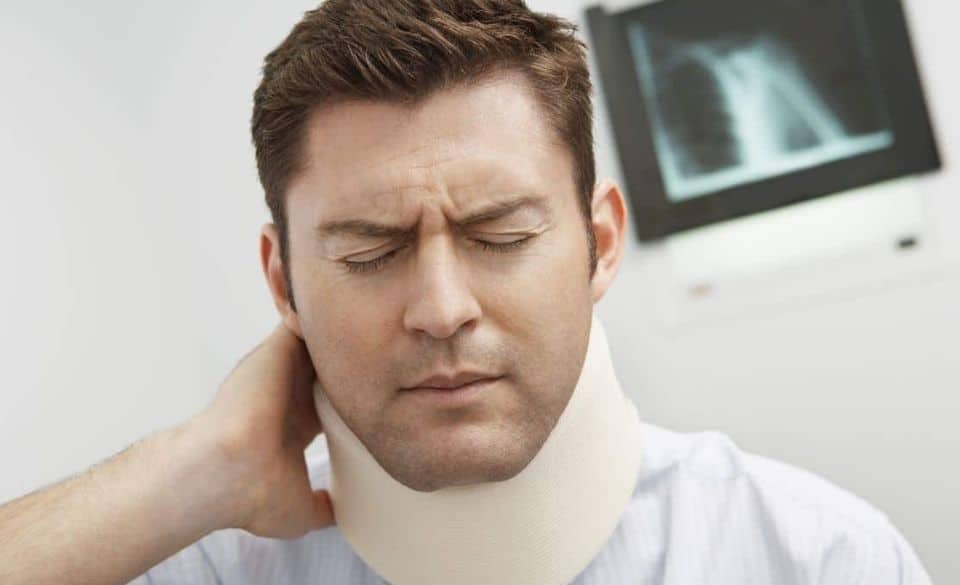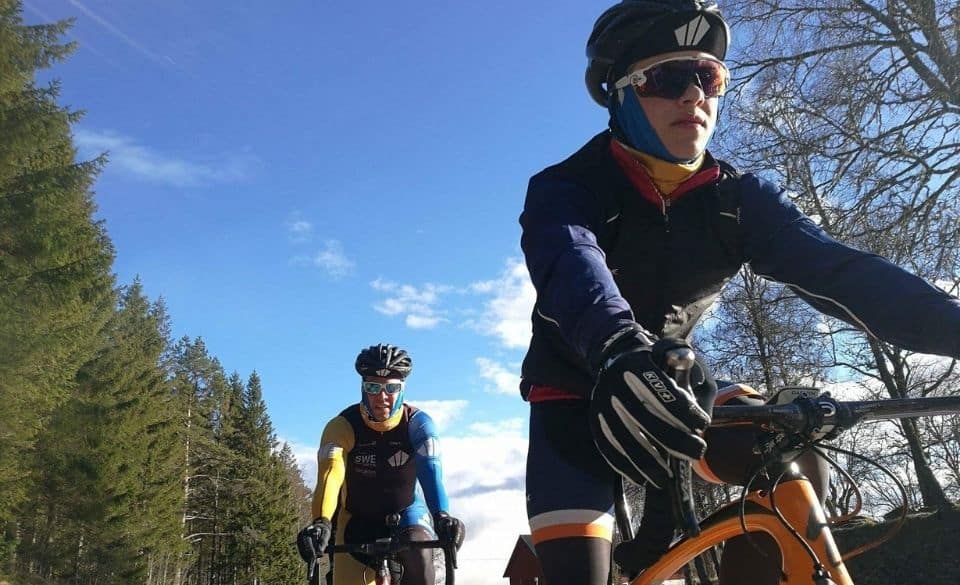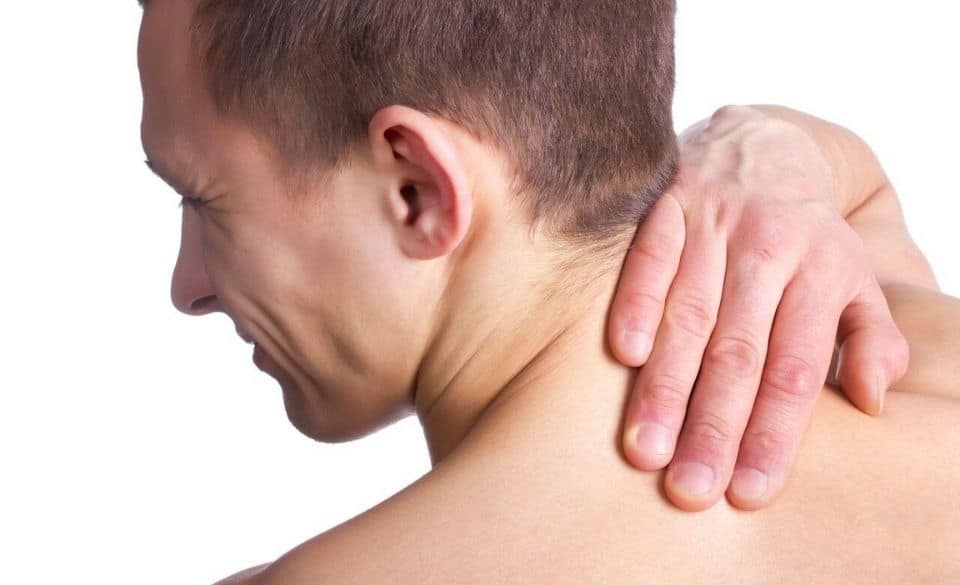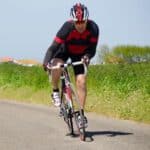
Shermer’s Neck – A Complete Guide To Cyclist Neck Syndrome
Page Contents
As a cyclist, we have all experienced some type of cyclist neck syndrome. Whether this is Shermer’s Neck or trapezius pain while cycling, there are some exercises you can put in place to help prevent this from occurring. In this article, we look at what causes this discomfort and what can we do about it.
Shermer’s Neck – What Is It & How To Deal With It?
First diagnosed in 1983, Shermer’s neck is a condition that affects mostly ultra-endurance cyclists. The condition usually affects neck motor function and the inability to extend the neck against gravity.
Shermer’s neck usually appears in long-distance riders and after a period of 800 km of nonstop riding. This is often emphasized when raising the eyes and looking at a distance. Reflecting exhaustion in the elevator muscles of the eye but can also be caused by:
– Former neck injuries
– Long periods in the aero bars
– Wearing helmet camera’s/lights
– Long periods of raising the eyes
The symptoms are not gradual either; after the first symptoms begin, the neck will normally cease functioning within two hours.
Even though Shermer’s Neck isn’t prominent in your average cyclist, it is widely common in ultra-distance cycling events. Prevention can include stretching, adjustment to handlebars and position, and strength training.
For more severe cases of cyclist neck syndrome, a brace may be needed to hold the cyclist’s head in the correct position. This will help to remove some load from the neck. It also means in severe cases it can take up to 14 days to regain the function of the neck. But in most cases, the neck’s motor function is restored within 2-14 days after diagnosis.
The possibility of developing Shermer’s neck should be understood by untrained cyclists or beginners looking to participate in races over 300 km in distance. Symptoms are more likely to appear in untrained individuals and actions should be taken to prevent this, such as:
Regular changing of position throughout the ride
A professional bike fit before attempting a ride longer than 300 km
Following a structured training plan
Include strength training prior to the event.
While all these actions may not 100% prevent Shermer’s Neck, it is more likely to prevent symptoms from arising early in the ride.

Cyclist Neck Syndrome – A Complete Guide
Many people experience neck pain because they are improperly positioned bike. This results in pinched nerves, arthritis and can sometimes contribute to spinal stenosis as well as Shermer’s neck.
Cyclist neck syndrome is often referred to as general pain in the neck while riding. Neck pain is extremely common in cyclists and affects up to 60% of riders today.
Often pain in and around the neck is caused by excess weight through the upper limbs. This results in more than 40% of the weight being transmitted through the upper limbs.
Because your head is in an extended position, the neck muscles need to carry the weight (10-11 lbs). This is because the spine is unable to support the weight directly.
As with any position, the more time spent in that position, the better your body is able to adapt. But this also means we are more prone to posture dysfunction such as; upper crossed syndrome.
Upper crossed syndrome is a dysfunction that causes the muscles in the neck and surround areas to get short and tight. This also affects the muscles that tuck your chin down (deep neck flexors). Causing the muscles to get stretched and weakened.
The combination of incorrect bike position, muscular imbalances, and decreased nerve root space can lead to symptoms of cyclist neck syndrome. But there are some basic things that can help prevent cyclist neck syndrome from happening.
– Make sure your elbows aren’t locked when riding
– Relaxed hands in order to allow proper blood flow
– Look forward with both eyes and neck
– Check your helmet is not obstructing your view causing you to lookup more
– Limit more than 40% of your weight supported by the handlebars
– Handlebar height isn’t too low forcing you to look forward.
– Check the tilt of your saddle so you aren’t loading the upper body with weight.
If you are still experiencing any type of neck syndrome, it is recommended you go see a qualified bike fitter.

Shermer Neck Treatment & Neck Brace
Luckily there are multiple Shermer neck treatments to help relieve discomfort or pain. This can involve simple treatments such as pinching the muscle behind your neck that is neck to the spine.
Start by tilting your head back, then pinch the muscle next to the spine. Then take your three middle fingers from the opposing hand and press deeply into the muscle. Continue to push the muscle fibers while working from the base of the scalp down the center of the back. Make sure to follow the spinal column along the way.
As you press, lower your chin gently towards your chest so you stretch the muscle while preventing the hand from sliding on the neck.
This exercise helps to loosen the muscles of the Splenius Capitis, Splenius Cervicis, and Erector Spinae.
If you have to serve symptoms of Shermer’s neck you may need to utilize a neck brace to support the weight of the head. Often these braces are self-made by the cyclist and adjusted based on the position of the vision the cyclist needs.
These braces are usually supported by the spine which follows along the back of the rider. It then connects to the helmet holding the rider’s head in position, removing most of the weight from the neck. The rider may also use a type of chin support connected to the helmet to control the lateral movement of the head.
Trapezius Pain While Cycling
Trapezius pain while cycling is often related to neck pain. Over time, cyclist’s often experiencing stiffness and pain in the trapezius area, often causing an onset of neck pain while riding.
Trapezius pain while cycling often causes tensing on the side of the neck and shoulders. When these muscles are tensed during long periods of riding, the area’s blood flow is decreased preventing oxygen from getting to the muscles. This often leads to pain, muscle spasms, and knots in the muscle.
To prevent any type of trapezius pain it is important to keep the muscles loose and relaxed. This means your bike position needs to be set up correctly and a consistent strengthening program should be applied to your training.
Below are some basic exercises you can do to prevent trapezius pain on the bike.
Neck Flexion
In an upright position (sitting or standing) lower your chin towards your chest. You should feel the muscles in the back of the neck stretching. Hold this position for 5-10 secs and repeat 5-8 times.
Neck Extention
With the same posture as the neck flexion exercise, tilt your head back so your nose is pointing towards the sky. The neck and upper shoulder muscles should feel like they are being stretched in this position. Hold for 5-10 seconds and repeat 5-8 times.
Neck Rotation
In an upright position rotate your head to both the left and right sides so your chin is pointing towards each shoulder. Repeat a total of 5-8 times on both sides and hold for 5-10 seconds when your chin aligns with the shoulder.
Neck Lateral Flexion
Keep the spine in a neutral position and on each side bend the neck so the ear moves towards the shoulder. Hold each position for a few seconds and repeat 5 times.
These are some simple exercises that can be done both on and off the bike. They will help keep the range of motion in the neck and help relieve any trapezius pain while cycling.



